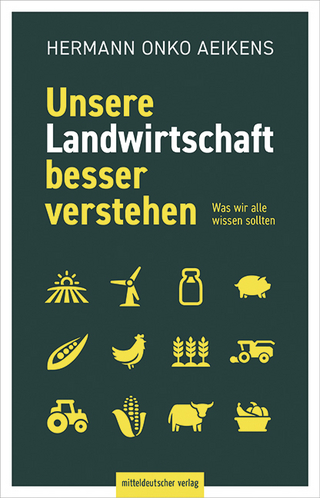
Short Guide to Writing about Biology, A
Pearson (Verlag)
978-0-13-414373-6 (ISBN)
- Nur im Set erhältlich (Einzelband nicht lieferbar)
- Artikel merken
Table of Contents Part I General Advice about Writing and Reading Biology
Introduction and General Rules
What Lies Ahead?
What Do Biologists Write About, and Why?
The Keys to Success
Avoiding Plagiarism
On Using Computers in Writing
On Using Computers for Data Storage, Analysis, and Presentation
Summary
Technology Tip 1. Using Shortcuts and AutoCorrect
Locating Useful Sources
What Lies Ahead?
Easy Ways to Access The Primary Literature
Using Indexes
Using Science Citation Index
Using Current Contents Connect
Using Medline and Other Databases
Prowling the Internet
Conducting Web Searches: Developing Productive Search Strategies
Final Thoughts About Efficient Searching: Technology Isn’t Everything
Closing Thoughts
Summary
Technology Tip 2. Using Search Engines E ffectively
General Advice on Reading, Note Taking, and Avoiding Plagiarism
What Lies Ahead?
Why Read and What to Read
Effective Reading
Reading Data: Plumbing the Depths of Figures and Tables
Take Notes in Your Own Words
Final Thoughts on Note Taking: Document Your Sources
Summary
Reading and Writing About Statistical Analyses
What Lies Ahead?
Statistical Essentials
Summary: Using Statistics to Test Hypotheses
Moving Beyond p-Values
Reading About Statistics
Writing About Statistics
Summary
Citing Sources and Listing References
What Lies Ahead?
Citing Sources
Summary of Citation Format Rules
Preparing the Literature Cited Section
A Sample Literature Cited Section
Technology Tip 3. Bibliographic Management S oftware
Technology Tip 4. Producing Hanging Indents
Revising
What Lies Ahead?
Preparing the Draft for Surgery: Plotting Idea Maps
Revising for Content
Revising for Clarity
Revising for Completeness
Revising for Conciseness
Revising for Flow
Revising for Teleology and Anthropomorphism
Revising For Spelling Errors
Revising for Grammar and Proper Word Usage
Becoming a Good Reviewer
Checklist
Technology Tip 5. Tracking Changes Made to Documents 115
Part II Guidelines for Specific Tasks
Prelude: Why Are You Writing Papers and Proposals and Giving Talks?
Writing Summaries, Critiques, Essays,and Review Papers
What Lies Ahead?
Writing Summaries and Critiques
Sample Student Summary
Writing Essays and Review Papers
Checklist for Essays and Review Papers
Answering Essay Questions
Basic Principles
Applying the Principles
Summary
Writing Laboratory and Other Research Reports
What Lies Ahead?
Why Are You Doing This?
The Purpose of Laboratory and Field Notebooks
Components of the Research Report
Where to Start
When to Start
Writing the Materials and Methods Section
Writing The Results Section
Citing Sources
What to Do Next?
Writing the Discussion Section
Writing the Introduction Section
Talking About Your Study Organism or Field Site
Deciding on a Title
Writing an Abstract
Preparing an Acknowledgments Section
Preparing the Literature Cited Section
Preparing a Paper for Formal Publication
A Note About Co-Authorship
Checklist for the Final Draft
Technology Tip 6. Using Computer Spreadsheets for Data Collection
Technology Tip 7. Graphing with Excel
Writing Research Proposals
What Lies Ahead?
What Are Reviewers Looking For?
Researching Your Topic
What Makes a Good Research Question?
Writing the Proposal
Tightening the Logic
The Life of a Real Research Proposal
Checklist
Presenting Research Findings: Preparing Talks and Poster Presentations
What Lies Ahead?
Oral Presentations
Writing the Talk
Giving the Talk
Dos and Don’ts for Oral Presentations
Common PowerPoint® Errors
Checklist for Being Judged
Poster Presentations
Checklist for Making Posters
Writing Letters of Application
What Lies Ahead?
Before You Start
Preparing the CV
Preparing the Cover Letter
Getting Effective Letters of Recommendation
Appendix A Commonly Used Abbreviations Appendix B Recommended Resources Index
| Erscheint lt. Verlag | 16.7.2015 |
|---|---|
| Sprache | englisch |
| Maße | 157 x 215 mm |
| Gewicht | 290 g |
| Themenwelt | Naturwissenschaften ► Biologie |
| ISBN-10 | 0-13-414373-6 / 0134143736 |
| ISBN-13 | 978-0-13-414373-6 / 9780134143736 |
| Zustand | Neuware |
| Haben Sie eine Frage zum Produkt? |
aus dem Bereich


